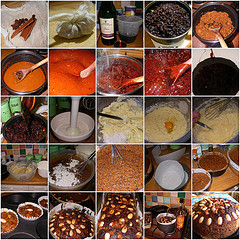What Gives Coffee Its Flavor?
By Jerry M Stein
When you become a real fan of coffee and enjoy sampling many different roasts and blends, you may begin to wonder why one will often taste so very different from another.
As you begin to explore the world of coffee you will find some beans or blends that are perfect for that morning cup. Then there will be others, that might taste sharp or bitter, and certainly not pleasing. Why does coffee often taste so differently?
Some differences are due to the unique characteristics of the beans. The way the coffee was grown and how it was processed, also, has a great effect upon its flavor. First, only four species of coffee beans are used to make the beverage we call ‘coffee’. You will most likely encounter two:
Two Species Of Coffee Plants
Arabica beans are finer and make the most complex, flavorful coffee. Two thirds of the world’s coffee production is of Arabica beans. Arabica is a much better quality coffee and is grown at a higher altitude.
Robusto beans contain more caffeine and have a bitter, woody, burnt rubber taste. The plants are hardy and disease resistant, and produce a large crop. Robusto is used in cheaper supermarket blends. It is often in Italian roasts and espresso blends and is valued for the frothy layer it produces on top of the cup, called crema.
Growing Factors That Affect Flavor
- Elevation
- Type of soil – Limestone, volcanic ash with pumice, or clay
- Climate
- Temperature
- Humidity
- Rainfall
- Care of the crop
- Was it raised organically?
- Did the plants grow in the shade?
- Were chemical fertilizers used?
- Were pesticides used?
Harvesting – Picking Methods Affect the Quality
There can be several pickings from the same trees at 1 to 2 week intervals.
- Were the beans handpicked?
- Were the beans in fully ripened, red cherries when picked?
- Mechanical picking strips the coffee plant.
- Under-ripened yellow and green beans produce inferior quality coffee with an unpleasant, sharp taste.
- Over-ripe, black coffee cherries also are inferior.
Processing
This is done to remove the skin and pulp of the coffee cherry from the bean and it affects the flavor.
- Wet Washed – This is called fermentation. It produces the most consistent flavor, sweetness and acidity. The beans are washed; skin and pulp are removed mechanically, then the beans are dried.
- Dry method – This is the ancient method of spreading the cherries out in the sun to dry. This can produce delicious coffee but rate of drying is not easy to control.
Storage
Both storage and methods of shipping can affect the flavor if odors or moisture are absorbed by the beans.
Roasting
- Light Roast or cinnamon roast – produced after about 7 minutes at 400°F.
- Medium Roast or city roast – produced after about 10 minutes at 400° F.
- French roast – dark roast – produced after 12 to 13 minutes at 400° F.
- Italian roast or Espresso – produced after 13 to 14 minutes at 400° F.
Grinding
Coffee deteriorates due to oxygen, moisture and light. After roasting and grinding, the coffee releases carbon dioxide gas as it ages on the shelf.
Packaging
Valve bags, plastic or paper bags, fractional packs, cans vary as to how well they seal in coffee flavor and seal out moisture, light, and oxygen.
Type Of Coffee
Different types of coffee beans produce different flavors when brewed. For instance, Costa Rican beans are highly regarded for their fine flavor, with a degree of acidity and brightness. Sumatra and Java beans produce a darker, mellow, full-bodied brew while East African beans have berry tones with a clean, crisp taste. As you try various coffees, blends, and roasts, you will learn to identify the different tastes and flavors. You’re bound to find favorites to brew into delicious cups of coffee.
For more information on coffee and Keurig coffee visit http://www.greatcoffee.com
Article Source: http://EzineArticles.com/?expert=Jerry_M_Stein
http://EzineArticles.com/?What-Gives-Coffee-Its-Flavor?&id=2043934



Speak Your Mind